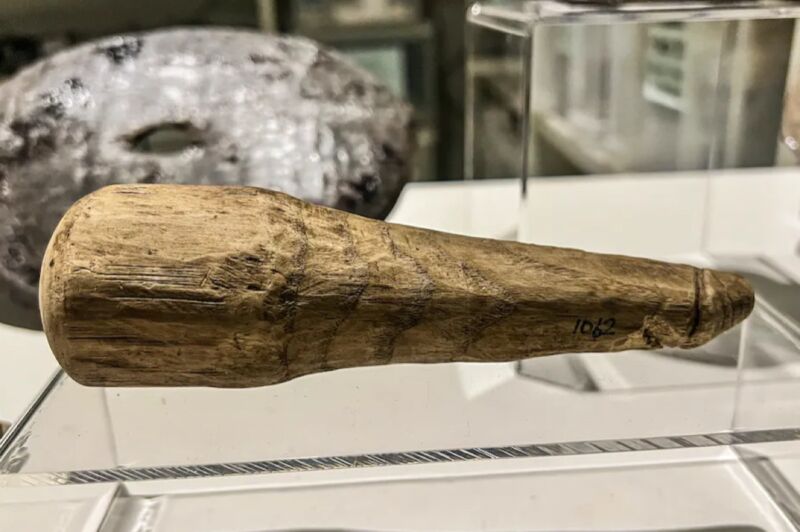Remember that ancient Roman “dildo”? It might just be an old Roman drop spindle

Enlarge / This phallus-shaped object went viral last month, but it might not be an ancient Roman dildo after all. (credit: Vindolanda Trust)
Odds are good you read at least one of the umpteen media stories last month about a possible 2,000-year-old "dildo" unearthed near the remains of a Roman auxiliary fort in the UK called Vindolanda. Well, it's either a dildo; a pestle used for grinding cooking, cosmetic, or medicinal ingredients; or something meant to be inserted into a statue and rubbed for good fortune (a common Roman practice). That's what the authors of a February paper in Antiquity concluded, anyway. But now we have another possible explanation to consider: The phallus-shaped artifact might be a drop spindle used for spinning yarn.
As we've reported previously, the Vindolanda site is located south of the defense fortification known as Hadrian's Wall. An antiquarian named William Camden recorded the existence of the ruins in a 1586 treatise. Over the next 200 years, many people visited the site, discovering a military bathhouse in 1702 and an altar in 1715. The Rev. Anthony Hedley began excavating the site in 1814, but he died before he could record what he found for posterity. Another altar found in 1914 confirmed that the fort had been called Vindolanda.
Serious archaeological excavation at the site began in the 1930s under the leadership of Eric Birley, whose sons and grandson continued the work after his death, right up to the present day. The oxygen-deprived conditions of the deposits (some of which extend 6 meters, or 19 feet, into the earth) mean that the recovered artifacts are remarkably well-preserved. These include wooden writing tablets and over 100 boxwood combs, which would have disintegrated long ago in more oxygen-rich conditions.